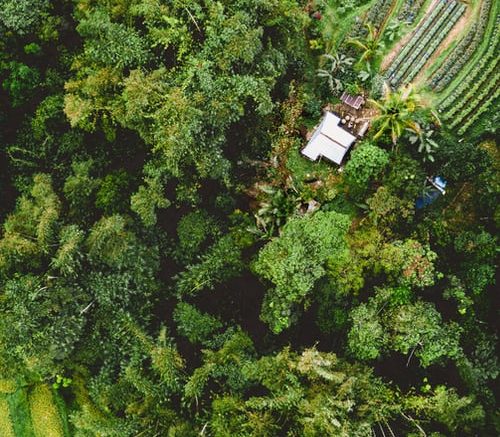Tree farming is the growth of trees for the purpose of harvesting lumber. It involves trees being farmed in a large land area and cut down in order to extract lumber for use in the lumber industry and the production or consumer goods. While the primary output of a tree farm is lumber, they have other benefits such as sustaining wildlife, improving the quality of the scenery, maintaining the soil quality and ground water being among the most prominent. Since the production of timber goods require large amounts of wood, tree farms provide a sustainable source of wood that does not put rainforests or other natural forest cover in danger. It also allows manufacturers to request specific types of wood for their products by having the landowners grow the requested species of tree. Since tree farming involves cutting down trees and immediately replanting them, clearing the site of the residue from felled trees is important. If roots are left in the ground, it could disrupt the growth of new trees and even transfer diseases. Therefore, services from agencies such as stump grinding Brisbane may be required if the farm itself does not have the required equipment and training in-house.

Tree farms also decrease deforestation as they increase the value of the lumber and give the landowners a reason to grow and protect trees. If, for instance, tree farming was to become illegal, it would result in mass deforestation as all the landowners who grew trees would clear the areas to grow more profitable crops as trees would lose all their value. Hence, tree farming contributes to the protection of trees. This is usually done in private lands to supplement family income and may involve the farming of high value trees that are difficult to find in the wild. Ornamental trees such as Christmas Trees can also be grown and harvested depending on the season for short term profit whereas wood grown for their high-quality timber usually takes longer to grow but results in better profit.
Sustainable Timber Source
The farming of timber would otherwise result in deforestation or the threatening of natural habitats and biodiversity. Felling farmed timber ensures responsible sources for the timber that is used in furniture, paper, buildings, and other timber products. Since the plants in a timber farm is grown to demand, this can result in farmers being able to grow specific species of trees to supply rarer types of timber. This would increase the supply of that species and discourage the illegal logging of the rarer tree as the supply has increased, which would make illegal logging less rewarding for the risk.

Decreasing Carbon Concentration
Trees get most of their mass due to carbon molecules built from atmospheric carbon dioxide in the air. Therefore, repeatedly farming and felling trees is an effective way to remove carbon from the atmosphere. The captured carbon is essentially trapped inside the wood and manufacturing products using the resultant timber is a net carbon sink and is a contributor toe reducing global warming, as carbon dioxide is a greenhouse gas.

Be the first to comment on "What is Tree Farming?"